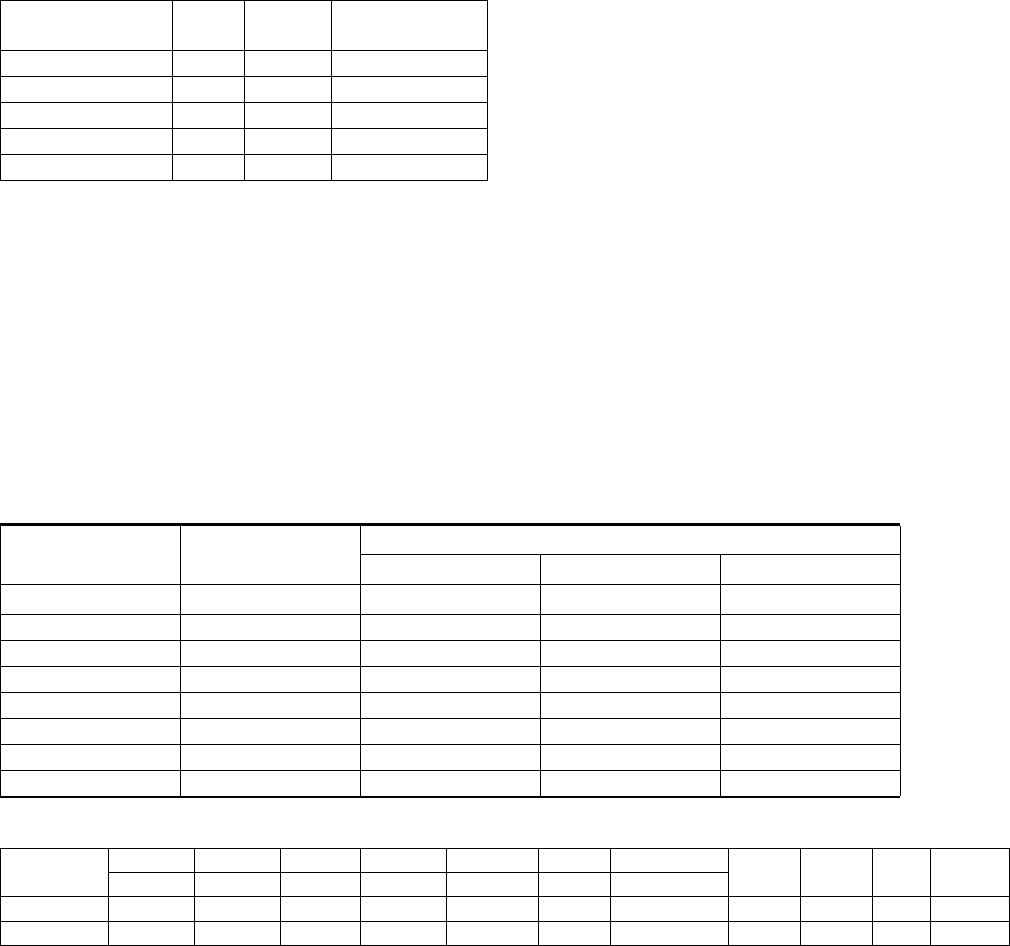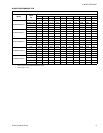
246782-YTG-B-0407
4 Unitary Products Group
FILTER PERFORMANCE
The airflow capacity data published in the “Blower Perfor-
mance” table listed above represents blower performance
WITHOUT filters. To determine the approximate blower per-
formance of the system, apply the filter drop value for the fil-
ter being used or select an appropriate value from the “Filter
Performance” table shown.
NOTE: The filter pressure drop values in the “Filter Perfor-
mance” table shown are typical values for the type of filter
listed and should only be used as a guideline. Actual pres-
sure drop ratings for each filter type vary between filter manu-
facturer.
NOTES:
1. Air velocity through throwaway type filters may not exceed 300
feet per minute. All velocities over this require the use of high
velocity filters.
APPLYING FILTER PRESSURE DROP TO
DETERMINE SYSTEM AIRFLOW
To determine the approximate airflow of the unit with a filter in
place, follow the steps below:
1. Select the filter type.
2. Determine the External System Static Pressure (ESP)
without the filter.
3. Select a filter pressure drop from the table based upon
the number of return air openings or return air opening
size and add to the ESP from Step 3 to determine the
total system static.
4. If total system static matches a ESP value in the airflow
table (i.e. 0.20, 0.60, etc,) the system airflow corre-
sponds to the intersection of the ESP column and Model/
Blower Speed row.
5. If the total system static falls between ESP values in the
table (i.e. 0.58, 0.75, etc.), the static pressure may be
rounded to the nearest value in the table determining the
airflow using Step 5 or calculate the airflow by using the
following example.
Example: For a 120,000 Btuh furnace operating on high
speed blower, it is found that total system static is 0.58" w.c.
To determine the system airflow, complete the following
steps:
1. Obtain the airflow values at 0.50" & 0.60" ESP.
Airflow @ 0.50": 2152CFM
Airflow @ 0.60": 2042 CFM
2. Subtract the airflow @ 0.50" from the airflow @ 0.60" to
obtain airflow difference.
2042 - 2152 = -110 CFM
Subtract the total system static from 0.50" and divide this
difference by the difference in ESP values in the table, 0.60" -
0.50", to obtain a percentage.
(0.58 - 0.50) / (0.60 - 0.50) = 0.8
3. Multiply percentage by airflow difference to obtain airflow
reduction.
(0.8) x (-110) = -88
4. Subtract airflow reduction value to airflow @ 0.50" to
obtain actual airflow @ 0.58" ESP.
2152 - 88 = 2064
RECOMMENDED FILTER SIZES
Input
BTU/H
CFM
Cabinet
Size
Top Return
Filter in
60 1200 B (2) 14 x 20
80 1200 B (2) 14 x 20
80 1600 C (2) 14 x 20
100 2000 C (2) 14 x 20
120 2000 D (2) 14 x 20
FILTER PERFORMANCE - PRESSURE DROP INCHES W.C.
Airflow Range
Minimum
Opening Size
Filter Type
Disposable Washable Fibers Pleated
CFM
in
2
In W.C. In W.C. In W.C.
0 - 750 230 0.01 0.01 0.15
751 - 1000 330 0.05 0.05 0.20
1001 - 1250 330 0.10 0.10 0.20
1251 - 1500 330 0.10 0.10 0.25
1501 - 1750 380 0.15 0.14 0.30
1751 - 2000 380 0.19 0.18 0.30
2001 & Above 463 0.19 0.18 0.30
UNIT CLEARANCES TO COMBUSTIBLES
Application
Top Front Rear Left Side Right Side Flue Floor/Bottom
Closet Alcove Attic
Line
Contact
In. In. In. In. In. In. In.
Downflow1 300 00
1
*
Yes Yes Yes NA
Horizontal 0 3 0 1 1 0 0 Yes Yes Yes
Yes
2
* Combustible floor base or air conditioning coil required for use on combustible floor.










